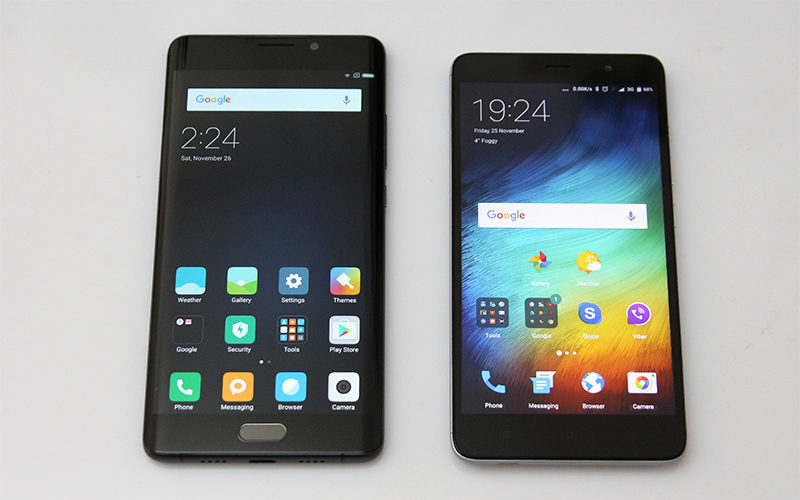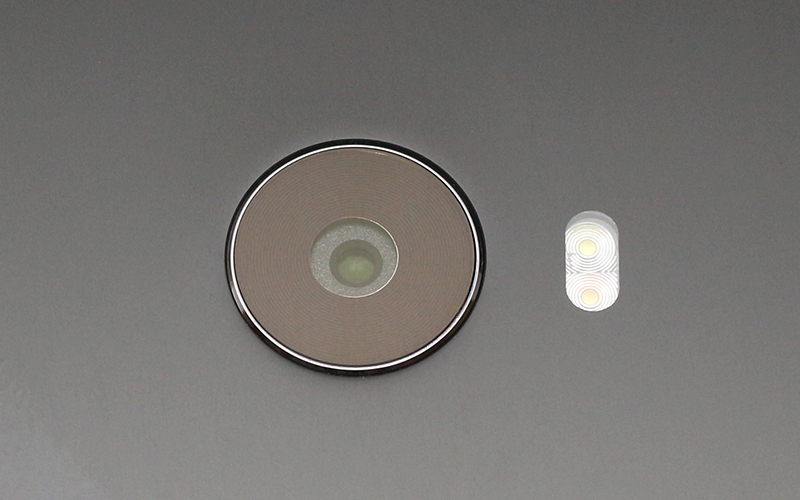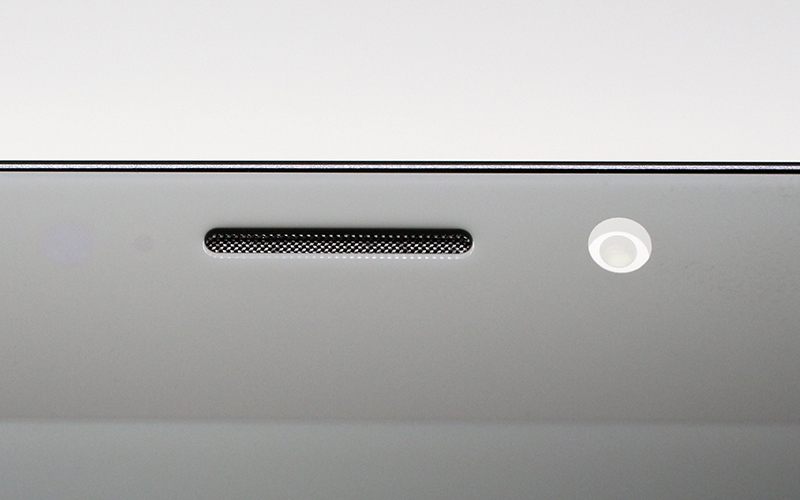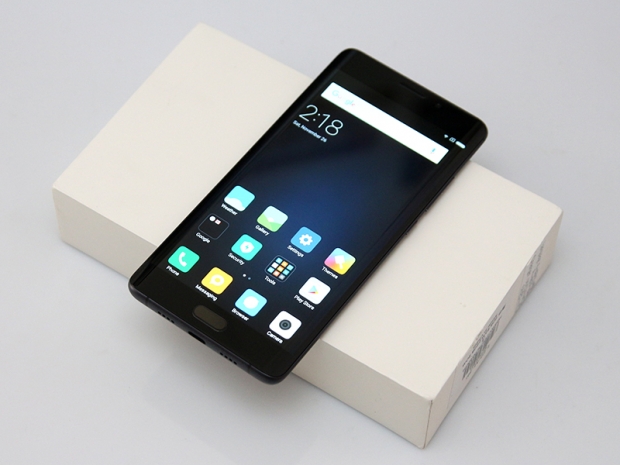Index
Audio, Display and Camera Quality
Xiaomi flagships tend to have a good reputation when it comes to audio quality, and the Mi Note 2 continues this proud tradition. It supports 192kHz/24bit audio and multiple lossless audio formats. Xiaomi uses three custom parts to give the Note 2 an edge in the audio department – an ESS Hi-Fi audio decoder, backed by a two-stage amplifier based on Texas Instruments and ADI chips.
The end result is impressive. The Mi Note 2 sounds awesome when you connect it to a proper sound system. The output is fairly loud and should be sufficient for any headphone addict. The integrated speaker is very loud too – not quite as loud as the iPhone 7 Plus, but it’s very close indeed. Need we say that call quality is excellent too?
While its audio capabilities are second to none, the Mi Note 2 falls short on the display front. The flexible OLED panel reportedly comes from LG, which may sound reassuring, but don’t get your hopes up yet.
This is a Diamond Matrix display, which is just another name for a non-RGB matrix, similar to Pentile matrices employed by Samsung. It just has a somewhat different matrix, but the end result is the same – you get fewer subpixels and less sharpness than you would on a traditional RGB matrix.

This wouldn’t be a problem on a small device, or if the display featured a higher resolution. However, 1080p on a 5.7-inch display just doesn’t cut it in this day and age. In fact, Samsung’s Note series featured similar displays three years ago. This doesn’t mean the display is grainy, or that you’ll see individual pixels, but it does mean that you won’t get the crispness of a good LCD display.
Colour reproduction is quite good, and the display can impress in some conditions, but at the same time, it has a few shortcomings, unrelated to the resolution and matrix type. For starters, it’s not that bright and, in some cases, a high-end IPS panel just looks better. Viewing angles are average and the display gets a cold tint when viewed from the side. This effect is particularly noticeable on the curved edges (Samsung’s implementation isn’t much better, but bear in mind that Xiaomi’s display isn’t nearly as curved as Samsung’s displays used in the Edge series).

Mi Note 2 next to entry-level Redmi Note 3 Pro: OLED delivers much better contrast, deeper blacks and vivid colours, but IPS displays deliver a crisp, natural looking image most users prefer.
Upsides of using an OLED display include excellent contrast and improved energy efficiency. The contrast aspect is quite important on a device like this. With so much black glass, an OLED display just looks better, especially if you like black wallpapers. Display power efficiency is harder to quantify. While the Mi Note 2 offers excellent battery life, we were expecting a bit more.
Overall, curved displays include a number of trade-offs. In the case of the Mi Note 2, it’s obvious that Xiaomi chose style over substance. Had it used a standard LCD display, like those used in its latest Mi5-series devices, the end result would have been a somewhat cheaper device with superior display quality. However, the focus was clearly on style, and from our perspective, the price you have to pay to get a curved display is rather high.

Sony's IMX318 1/2.6" sensor tucked away underneath scratchproof glass. The camera is almost flush with the surface.
It seems the camera took a back seat to style as well. Based on Sony’s IMX318 sensor, the camera module is relatively compact, and there’s a reason for this. Xiaomi always tries to make their cameras flush to the rear surface, so you don’t get the “hump” you would usually get on a Samsung flagship. That’s nice, but it also means you don’t get the same optics. If you have to save space on optics, it makes sense to reach for a small sensor with loads of pixels, which is exactly what the IMX318 is.
It’s not a flagship camera solution, and it’s not the same 23-megapixel sensor used in Sony flagship phones – that particular sensor is substantially bigger than the IMX318, which is more of a mid-range sensor. What does this mean for overall image quality? Let’s take a closer look.

Here's our standard indoor shot, with plenty of colours and glossy highlights. You'd expect the camera to encounter some noise in the 100% blowup, but it does not. The results are good, and even better when you factor in the resolution. Bear in mind that we are talking about a 22.5-megapixel sensor here, so the 100% crop at the bottom shows a smaller area than the 12-, 13- and 16-megapixel phones we had a chance to try out.

The same scene under limited incandescent lighting doesn't look nearly as impressive, which can be attributed to the small size of the sensor. The images tend to be underexposed, but this is easily compensated for. You also end up with a fair amount of noise, but once again, this is a 22.5-megapixel sensor and you simply can't compare the 100% crop to that of a 13-megapixel phone. Frankly, we were expecting even worse results, due to the 1.0um pixel size.

We were equally concerned that the sensor wouldn't have enough dynamic range, but oddly enough, it does a rather good job. As you can see in this comparison shot with terrible lighting and haze, the HDR mode is subtle and capable of delivering good results even in extremely bad conditions.

What's more, HDR doesn't mess up the details or generate a lot of artifacts/ghosting.

This image also illustrates why it's a good idea to have a few spare megapixels - if you need to zoom in, there's plenty of pixels to play around with. To be precise, you end up with 5488x4112px images. The downside is that they're 10MB+ each, so a hundred shots will take up a gig of storage.
Overall, the 22.5-megapixel camera is a mixed bag, but it gets the job done. We were pleasantly surprised by its dynamic range, because we expected even worse performance in certain scenarios. On the other hand, in low light conditions, the Mi Note 2 can’t keep up with the latest flagships from Samsung, Apple, or even Xiaomi – remember, the substantially cheaper Mi5s features the same 12-megapixel camera sensor used in Google’s Pixel phones.
So what’s the use of having all those pixels if they’re so damn small? Well, the IMX318 can capture a lot of detail in good light, allowing you to zoom in and crop images with plenty of resolution to spare. It also makes sense for EIS.

The 8-megapixel front-facing camera is impressive. Not only does it have a quality sensor capable of snapping some great images even in low light, but it sports autofocus (although autofocus may take some getting time used to, especially if you’re a selfie addict).




